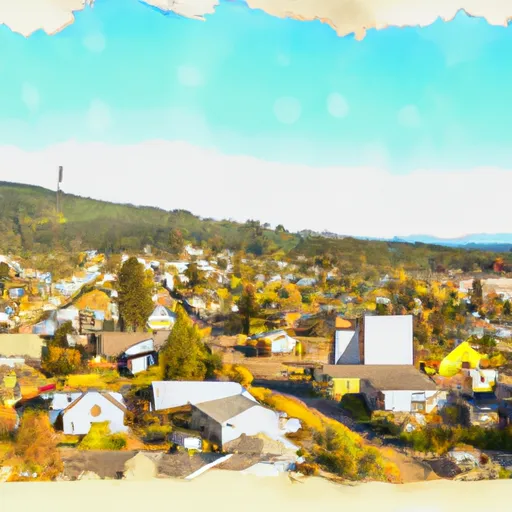-
 Snoflo Premium
Snoflo Premium
Get unlimited access to all our content
With no Ad interruptions! - Start Your Free Trial Login with existing account
Ione
Eden Index
Climate
8.4
•
Recreation
5.3
•
Community
•
Safeguard
5.2/10

Ione is a small town located in Pend Oreille County, Washington, known for its picturesque natural surroundings and abundance of outdoor recreation opportunities. The climate in Ione is characterized by warm summers and cold winters. Summers are typically mild with temperatures averaging around 80°F, offering pleasant conditions for outdoor activities. Winters are cold with average temperatures ranging from the 20s to 30s°F, providing opportunities for skiing and snowboarding in nearby mountain ranges.
Ione benefits from its proximity to the Pend Oreille River, which flows through the town. The river not only contributes to the scenic beauty of the area but also offers hydrology constituents for water-based activities such as boating, fishing, and swimming. The river is renowned for its pristine waters and diverse fish population, making it a favorite spot for anglers.
In addition to the river, Ione is surrounded by national forests and state parks, offering ample opportunities for hiking, camping, and wildlife observation. Outdoor enthusiasts can explore the nearby Colville National Forest, Kaniksu National Forest, or visit the Little Pend Oreille National Wildlife Refuge.
In conclusion, Ione, Washington, offers a pleasant climate, access to the Pend Oreille River, and a variety of outdoor recreational activities, making it an ideal destination for nature lovers and adventure seekers.
What is the Eden Index?
The Snoflo Eden Index serves as a comprehensive rating system for regions, evaluating their desirability through a holistic assessment of climate health, outdoor recreation opportunities, and natural disaster risk, acknowledging the profound impact of these factors on livability and well-being.
Climate Health Indicator (CHI): 8.4
Ione receives approximately
755mm of rain per year,
with humidity levels near 74%
and air temperatures averaging around
7°C.
Ione has a plant hardyness factor of
6, meaning
plants and agriculture in this region thrive during a short period during spring and early summer. Most
plants will die off during the colder winter months.
By considering the ideal temperature range, reliable water supplies, clean air, and stable seasonal rain or snowpacks, the Climate Health Indicator (CHI) underscores the significance of a healthy climate as the foundation for quality living.
A healthy climate is paramount for ensuring a high quality of life and livability in a region, fostering both physical well-being and environmental harmony. This can be characterized by ideal temperatures, reliable access to water supplies, clean air, and consistent seasonal rain or snowpacks.
Weather Forecast
Streamflow Conditions
Pend Oreille
Area Rivers
Pend Oreille
Snowpack Depths
Pend Oreille
Reservoir Storage Capacity
Pend Oreille
Groundwater Levels
Recreational Opportunity Index (ROI): 5.3
The Recreational Opportunity Index (ROI) recognizes the value of outdoor recreational options, such as parks, hiking trails, camping sites, and fishing spots, while acknowledging that climate plays a pivotal role in ensuring the comfort and consistency of these experiences.
Access to outdoor recreational opportunities, encompassing activities such as parks, hiking, camping, and fishing, is crucial for overall well-being, and the climate plays a pivotal role in enabling and enhancing these experiences, ensuring that individuals can engage in nature-based activities comfortably and consistently.
Camping Areas
| Campground | Campsites | Reservations | Toilets | Showers | Elevation |
|---|---|---|---|---|---|
| Lake Thomas | 16 | 3,234 ft | |||
| Sullivan Lake | 40 | 3,372 ft | |||
| Big Meadow Lake | 28 | 3,432 ft | |||
| West Sullivan | 26 | 2,610 ft | |||
| Browns Lake | 25 | 3,477 ft | |||
| East Sullivan | 61 | 2,628 ft | |||
| Skookum Creek- State Forest | 10 | 2,063 ft | |||
| Flodelle Creek- State Forest | 8 | 3,105 ft | |||
| Boundary Dam - Seattle City Power | 15 | 2,032 ft | |||
| Panhandle | 15 | 2,052 ft |
Nearby Fishing
Nearby Ski Areas
Catastrophe Safeguard Index (CSI):
The Catastrophe Safeguard Index (CSI) recognizes that natural disaster risk, encompassing floods, fires, hurricanes, and tornadoes, can drastically affect safety and the overall appeal of an area.
The level of natural disaster risk in a region significantly affects safety and the overall livability, with climate change amplifying these risks by potentially increasing the frequency and intensity of events like floods, fires, hurricanes, and tornadoes, thereby posing substantial challenges to community resilience and well-being.
Community Resilience Indicator (CRI):
The Community Resilience Indicator (CRI) recognizes that education, healthcare, and socioeconomics are crucial to the well-being of a region. The CRI acknowledges the profound impact of these elements on residents' overall quality of life. By evaluating educational resources, healthcare accessibility, and economic inclusivity, the index captures the essential aspects that contribute to a thriving community, fostering resident satisfaction, equity, and social cohesion.

